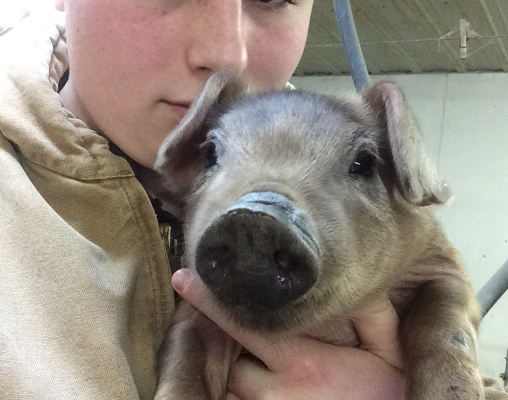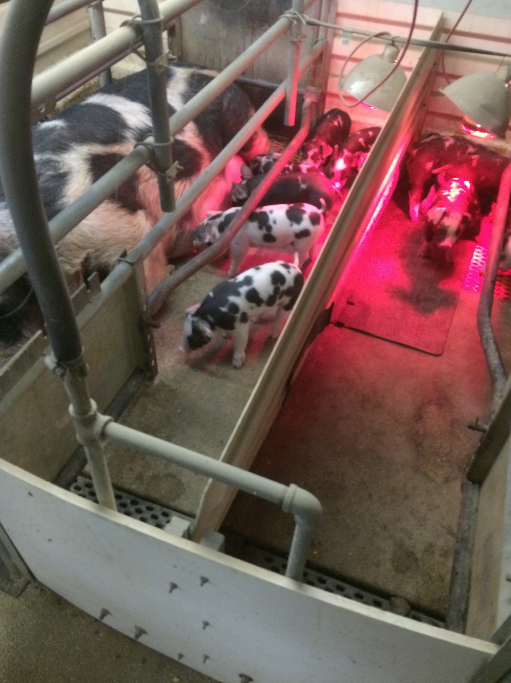Farm life: Pigs provide biology teacher with real life genetic projects

By: Cam Grubic
Entering the warm exterior building on Pheasant Ridge Farms, the farrowing crates are full of piglets. The overwhelming sound of squealing piglets takes control over the eardrums of anyone deciding to make a visit. For them, the bundles of adoration and cuteness come twice a year, but the excitement can never grow old.
For the Paulsen children, Tommy, Sutton and Fisher, it is exciting to see what adorable piglets can be produced from their show pigs of previous years. Five-year-old Fisher is partial to his Yorkshires, a breed known as pink with erect ears. Tommy, a 13-year-old nephew of science teacher Debbie Paulsen and son of ninth grade English teacher Jen Paulsen, loves his Chesters, another breed known to be white; however, the Chesters have ears that are more floppy instead of straight. The kids will each name their pigs and take them for walks, getting them used to the tapping of the whip for direction, working hard and preparing every day for shows.
The process of breeding is done by artificial insemination, ordering the semin from boars across the nation. “That’s the beauty of AI [artificial insemination]. It used to be done by what was available at your house, or what was near by, but now we can get semin from anyone,” Debbie said.
 About a dozen sows are bred at a time, creating diversity among the piglets. The three big breeds are Durocs, which are red; Yorkshires; Chesters and Spots. “Like dogs, all of these breeds have their faults, and pure breeds have their faults,” Debbie said. “If you cross breed them, you can play off of that. Yorkshires are known for their maternal ability. They will have big litters. Hampshires are horrible mothers, but you cross the two and you can play off of that.”
About a dozen sows are bred at a time, creating diversity among the piglets. The three big breeds are Durocs, which are red; Yorkshires; Chesters and Spots. “Like dogs, all of these breeds have their faults, and pure breeds have their faults,” Debbie said. “If you cross breed them, you can play off of that. Yorkshires are known for their maternal ability. They will have big litters. Hampshires are horrible mothers, but you cross the two and you can play off of that.”
To begin the breeding process, the Paulsen’s use altrenogest, which is synthetic progesterone, a hormone which makes the female begin to think that she is pregnant. They are given PG600, which provokes ovulation in the sow. By doing that, it puts the sows on track to have the same ovulation cycle, and then they are inseminated.
When ordering the semin from a boar, Mr. Paulsen looks for something that, “capitalizes the strengths of your female, or fills in her deficits,” which means that he needs a male with structure or genetics that will fill in what the female is lacking to breed piglets with good shape, size and form.
The pigs should be marketed between six to eight months of age, and the ones selected from litters should be shown between four to eight months of age. “Their prime should be hopefully around eight months old,” Mr. Paulsen said. “The sows should be having their first litter a year after they were born.”
Once the piglets are born, they are vaccinated, and most males are castrated. The piglets are weaned from their mother’s milk at 21 days and are sent to a warmer area to grow more.
Debbie said, “A lot of people envision crates and think of that as inhumane, but they are there for protection and are temporary for the sow.” Without the crates, the sows are free to roam the whole stall and could potentially lay on her own piglets; crates are simply there for an escape route designed for piglets.
The Paulsen family members take pride in their raising of pigs for show and look forward for show seasons in the years to come.









You must be logged in to post a comment Login